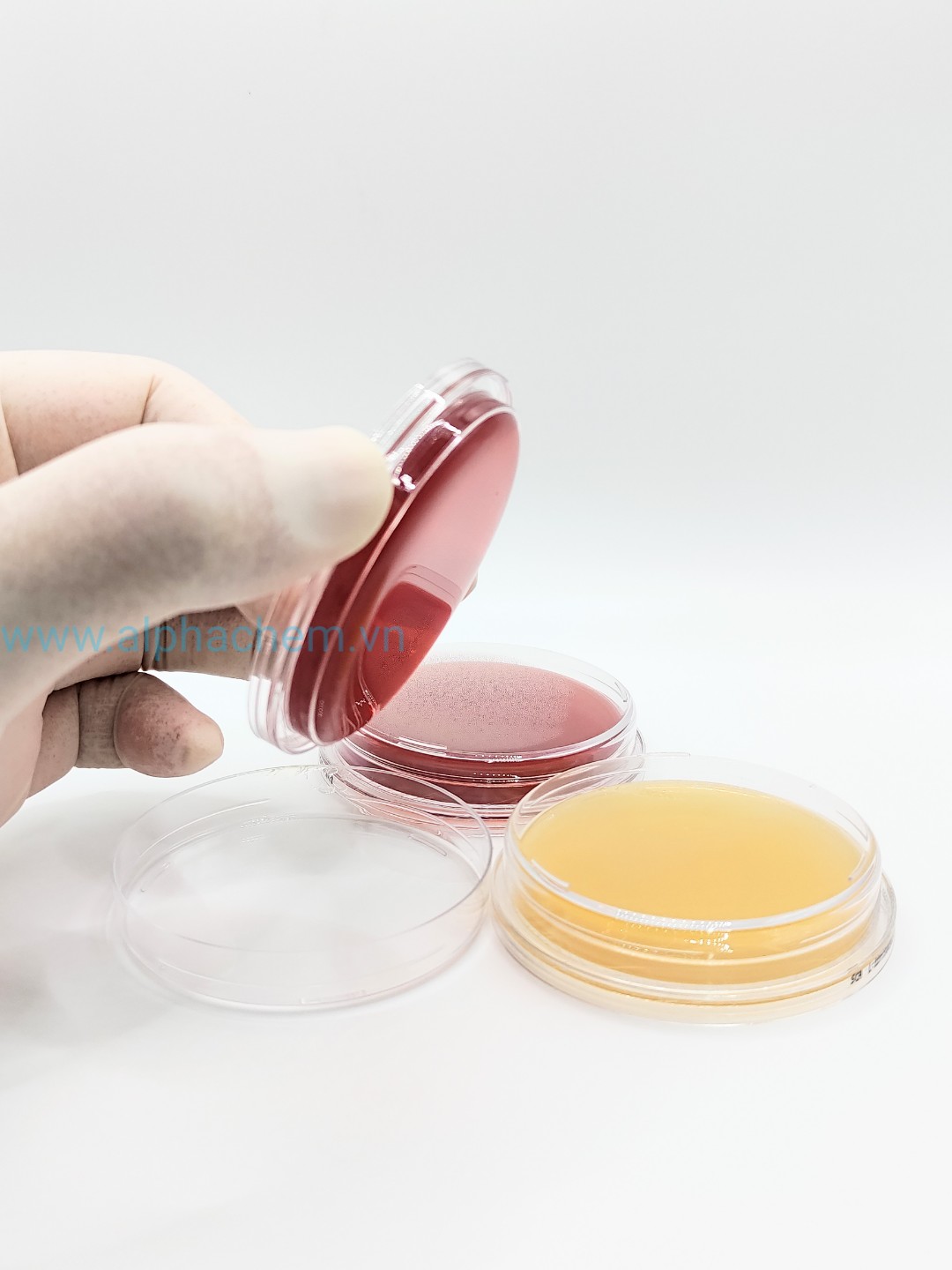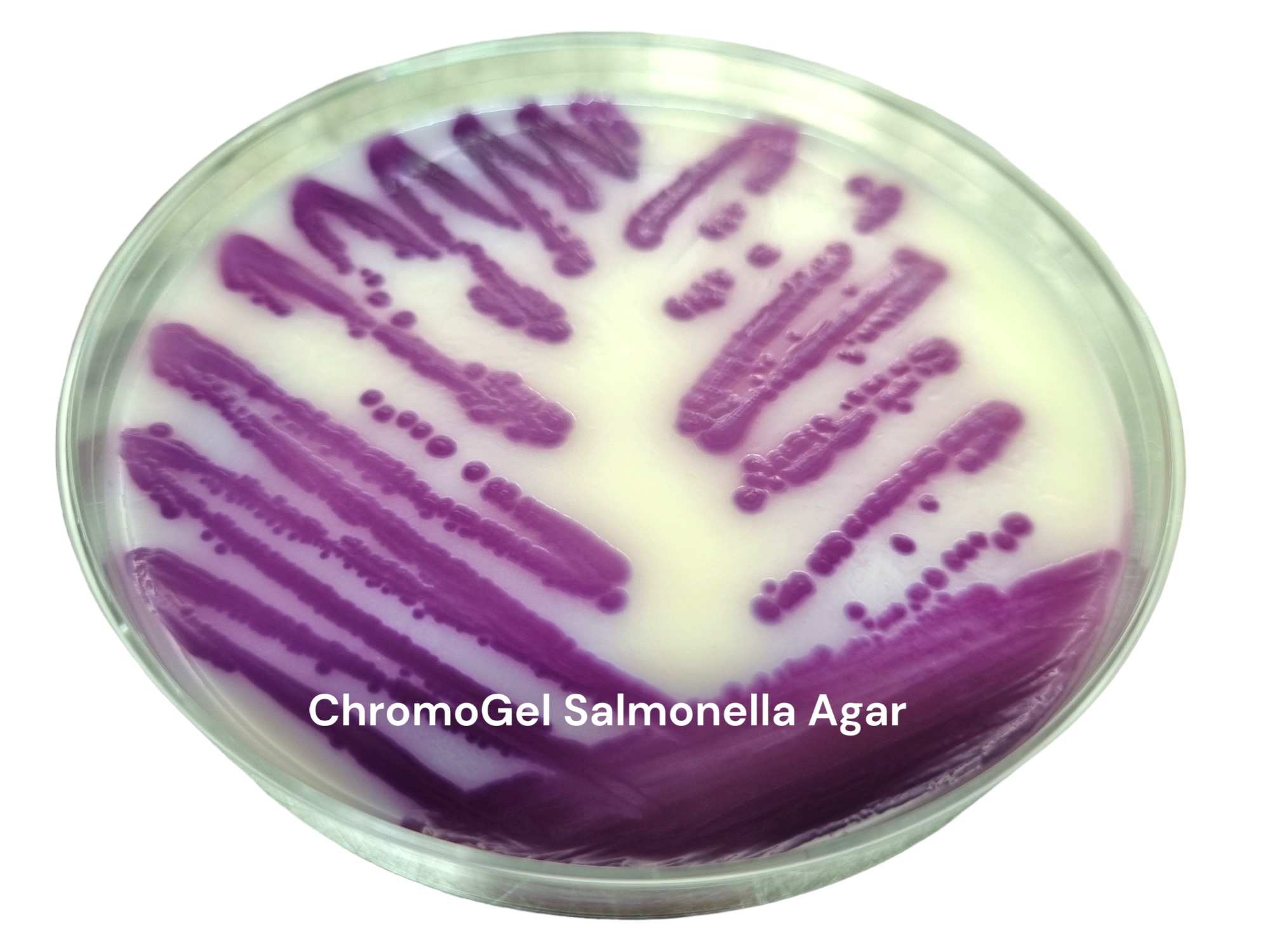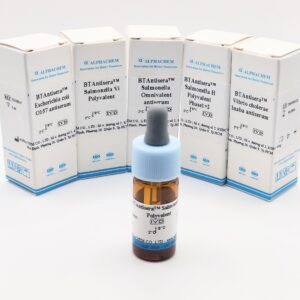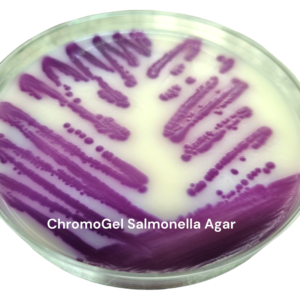BTAntiseraTM Salmonella antisera
Intended Use
Liquid stable antisera for the determination of O, H and Vi antigens for the serological identification of Salmonellae.
Summary and Explanation
According to the World Health Organisation there are in excess of 2500 different serotypes of Salmonella found in human and animal environments. Biochemical identification is unsatisfactory alone and full identification can only be done with the aid of specific antiserum.
Principle
Serological identification of salmonella can be achieved first by determination of the general “O” group by polyvalent antiserum and then by the use of monovalent antiserum to determine the “O” antigen. In the same manner the “H” antigen identity can be determined by the use of poly- and monovalent antiserum.
Identification is achieved when whole organism is mixed with antiserum and agglutination or clumping occurs.
Formulation
Antisera are prepared from rabbits immunised with standard reference strains according to WHO guidelines, and adsorbed to remove cross reactions. The antisera contain <0.1% sodium azide as a preservative.
Warnings and precautions
Observe approved biohazard precautions and aseptic techniques. To be used only by adequately trained and qualified laboratory personnel. Sterilise all biohazard waste before disposal. Sodium azide preservative may be toxic if ingested and may react with lead and copper plumbing to form highly explosive salts. Always dispose of by flushing to drain with plenty of water. Refer to Product Safety Data sheet.
Contents: See pack label
Stability and storage
Store unopened at 2-8°C until the expiry date shown on the pack label. Once opened, product should be stored at 2-8°C and may be used until the expiry date given on the label. On storage, some antisera may become slightly turbid. This does not necessarily indicate deterioration and the product may be clarified by centrifugation or filtration before use. If the product exhibits gross turbidity indicating contamination it should be discarded.
Do not freeze reagents
Materials required but not provided:
Standard microbiological supplies and equipment such as loops, applicator sticks, clean glass microscope slides or glass tubes, swabs, culture media, incinerator and incubator, etc., as well as reagents and additives such as sterile 0.85% saline solution.
Procedure
Slide agglutination of live organisms
- Dispense two 5-10μl volumes of sterile 0.85% saline solution (saline) onto a carefully cleaned microscope slide. The slide may be partitioned using a chinagraph pencil. With an inoculation loop take one 1-2mm colony of live organisms from a fresh culture on Nutrient Agar or similar and emulsify into each drop of saline to produce a distinct and uniform turbidity.
- Place a drop (30-40μl) of antiserum onto one of the emulsified isolates and on to the other a drop (30-40μl) of saline as a control. Note: Do not allow the organism to contaminate the antiserum dropper bottle.
- Mix the reagents by tilting the slide back and forth for 60 seconds while viewing it under indirect light against a dark background.
- Distinct clumping or agglutination within this period, without clumping in the saline control (auto-agglutination), should be regarded as a positive result. Weak agglutination should be recorded as negative.
Slide agglutination of heat treated organisms
If no agglutination is found with any of the polyvalent O sera, repeat the above procedure using the Vi antiserum.
If a positive agglutination is found with the Vi antiserum, prepare a dense call suspension of the organism in saline and heat it to 100°C for 60 minutes or autoclave at 121°C for 15 minutes. Repeat the slide agglutination tests as described above with polyvalent O and Vi antisera. The Vi antiserum should now give a negative result and the O antigens should be revealed.
Interpretation of results
Isolates producing a distinct positive reaction with the polyvalent antisera are assumed to be Salmonella from the groups (O or H) represented by the antiserum. Further testing of the isolate should be conducted as described in steps 1-3, with monovalent antisera.
Limitations of use
Only cultures or organisms identified as Salmonella by morphological and biochemical features should be serotyped with this product. Polyvalent antisera are intended for use in rapid slide agglutination tests only. Monovalent antisera are intended for use in rapid slide agglutination tests for further identification.
Perform O and Vi antigen determination first, then H antigen determination can normally be determined by slide agglutination, however some strains are not sufficiently richly flagellated in which case passage through motility medium. Also for reliable identification, positive results obtained by slide agglutination with H sera should be confirmed by tube agglutination tests with a formaldehyde-killed broth culture and antisera designed for tube tests.
H-antisera contain sodium azide as a preservative; they should not be used for phase induction.
Quality control
It is recommended that quality control should be performed with at least one organism to demonstrate a positive reaction and at least one organism to demonstrate a negative reaction. Do not use the product if the reactions with the control organisms are incorrect. Check for signs of deterioration. Do not use reagents if they are contaminated or cloudy.







Đánh giá
Chưa có đánh giá nào.